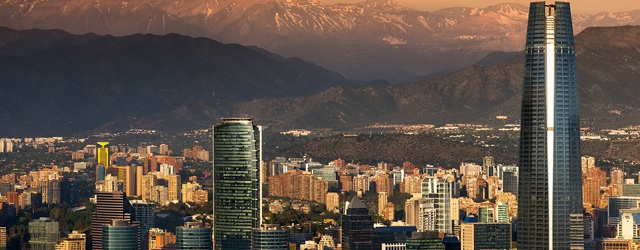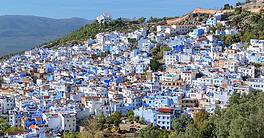Latin American nations seeking fiscal fixes encounter a wide variety of factors beyond their control.

Latin America no longer has illusions: Commodity prices will not soon rise again, and without fiscal fixes, GDP growth will remain subdued. Yet for most Latin American governments, fiscal policy options are restricted—by domestic politics, social unrest and macroeconomic forces.
Chile, for example, is bedeviled by slow growth while it deals with popular resistance to proposed social reforms. Colombia, facing down its guerrilla movement, is betting on an ambitious plan of infrastructure investment. Ecuador and Venezuela are facing many obstacles to improve their economic activity and public accounts. Yet it is the region’s two economic giants—Brazil and Mexico—that prompt most concern.
Still, given that the slowdown is worldwide, Latin America can hardly be counted out. It remains attractive for short-term financial investments because of currency devaluations, relatively high interest rates, low asset prices and the prospect for high-margin returns. According to Mauro Leos, vice president and senior analyst for Latin America in the sovereign risk unit of Moody’s Investors Service, the governments and companies will have to build financial buffers to weather the current depressive moment of the global economy.
Each nation strives toward that goal in its own way. Peru is maintaining a growth path and starting the “social revolution” promised by its new president, Pedro Pablo Kuczynski, who promptly cut sales taxes to raise consumption. The Andean countries that most suffered from lower mineral commodity prices—Colombia, Peru, Bolivia and Chile—are making fiscal policy adjustments to draw investors. Colombian president Juan Manuel Santos is working to reach a peace agreement with the FARC guerrilla movement. “If approved, this agreement will bring the economic benefits of peace and can remove the security issue from investment plans,” Leos says. “It opens opportunities and improves Colombia’s image.”


Direct investment projects can do well in the next few years, especially in countries with large potential consumer markets and good business opportunities in oil, gas, infrastructure, agribusiness, manufacturing and even mining.
Central America has the best economic performance among the Western Hemisphere. It has been profiting from US and Mexican growth and from a well-managed fiscal administration. But the violence of its criminal gangs and the displacement of its people loom as growing problems. “Central America is now the Syria of Latin America,” says Rafael Fernández, head of international studies at the Autonomous Institute of Technology of Mexico (ITAM).
But the bigger worries in terms of impact on the region are Brazil and Mexico, the two largest economies. Facing its “most powerful recession in recent history,” in the words of World Bank executive director Otaviano Canuto, Brazil has not yet bottomed out. World Bank analysis finds Brazil’s economy still contracting in 2016—its second year of recession—and estimates a final GDP rate of -4% for the year, improving to -2.4% for 2017. According to Brazilian Finance minister Henrique Meirelles, growth could reach 2.5%, or even 4%, by 2018 if social security and labor reforms are approved by the congress. World Bank projections aren’t as rosy: 0.8% growth in 2018.
“Brazil has to make a severe, continuous and long-term fiscal adjustment,” says Canuto, noting that per capita GDP will be more than 10% smaller this year than in 2013 and unemployment has soared to more than 11%. The country has no fiscal space for short-term economic stimulus because of its growing public debt, says Leos. It may end up with a primary public deficit of less than $55 billion in 2016, thanks to a policy of official forgiveness for companies that bring their capital back to Brazil. For 2017 the government projects a primary deficit of $43 billion, but still hasn’t found sources for $20 billion, which could push the total to $63 billion. Brazil’s only trump card is to revive the bank transactions tax (CPMF), which was eliminated in 2008 and remains a hostage of the congress.
“The country is suffering from anemic productivity and fiscal indigestion,” says Leos. “One disease feeds the other.”
Brazil still faces huge political risks that could compromise its fiscal adjustment, even after the impeachment of president Dilma Rousseff. Her successor, the right-wing Michel Temer, faces his own trial at the Superior Electoral Court, and his name has been mentioned in corruption investigations. Temer also has to bargain with a swing congress to get his fiscal policy and reforms approved in 2017.
“With luck, Temer will adopt an economic agenda diluted by the congress,” says João Augusto Castro Neves, director for Latin America at Eurasia Group. “We hope that whatever Temer can deliver to the country might be helpful to give some relief in 2017 and to keep the reform agenda on track.”
Mexico’s position isn’t as difficult as Brazil’s. The economy should remain on its modest growth path—around 2.5% for this year and next—as oil prices remain low. Similar to Brazil, it can take advantage of investments in energy and infrastructure sectors. Still, president Enrique Peña Nieto needs cooperation from congress to implement 11 key reforms—including several in telecommunications and the critical oil/gas industry.
Accounting for 25% of Mexico’s income, state-owned oil giant Pemex has reduced its production during the past 10 years. But it can regain its high performance thanks to private investments. “Mexico is still attractive, especially for oil, gas and shale production, despite its domestic prostration,” says Emilio Ricardo Lozoya, CEO of Makech Capital and Pemex’s former chairman.
In Mexico, however, “the ‘Trump risk’ is clearly present,” says Moody’s Leos. The Republican candidate for the White House has targeted Mexico for criticism while on the campaign trail, announcing that, if elected, he will review the North America Free Trade Agreement, expel undocumented Mexican immigrants and demand payment for a giant wall along the border. According to ITAM’s Fernández, a Trump victory would be a “big blow” to Mexican and American interests.
GDP GROWTH |
INFLATION |
|||
|---|---|---|---|---|
Country |
2015 |
2016 |
2015 |
2016 |
Argentina |
1.2 |
-1.5 |
n/a |
n/a |
Bolivia |
4.8 |
3.8 |
4.1 |
4 |
Brazil |
-3.8 |
-3.8 |
9 |
8.7 |
Chile |
2.1 |
1.5 |
4.3 |
4.1 |
Colombia |
3.1 |
2.5 |
5 |
7.3 |
Costa Rica |
3.7 |
4.3 |
0.8 |
1.1 |
Dominican Republic |
7 |
5.4 |
0.8 |
3.6 |
Ecuador |
0 |
-4.5 |
4 |
1.6 |
El Salvador |
2.4 |
2.5 |
-0.7 |
2.1 |
Guatemala |
4 |
4 |
2.4 |
4 |
Honduras |
3.6 |
3.5 |
3.2 |
4.2 |
Mexico |
2.5 |
2.4 |
2.7 |
2.9 |
Nicaragua |
4.5 |
4.5 |
4 |
6.1 |
Panama |
5.8 |
6.1 |
0.1 |
0.8 |
Paraguay |
3 |
2.9 |
2.9 |
3.8 |
Peru |
3.3 |
3.7 |
3.5 |
3.1 |
Uruguay |
1.5 |
1.4 |
8.7 |
9.4 |
Venezuela |
-5.7 |
-8 |
121.7 |
481.5 |



